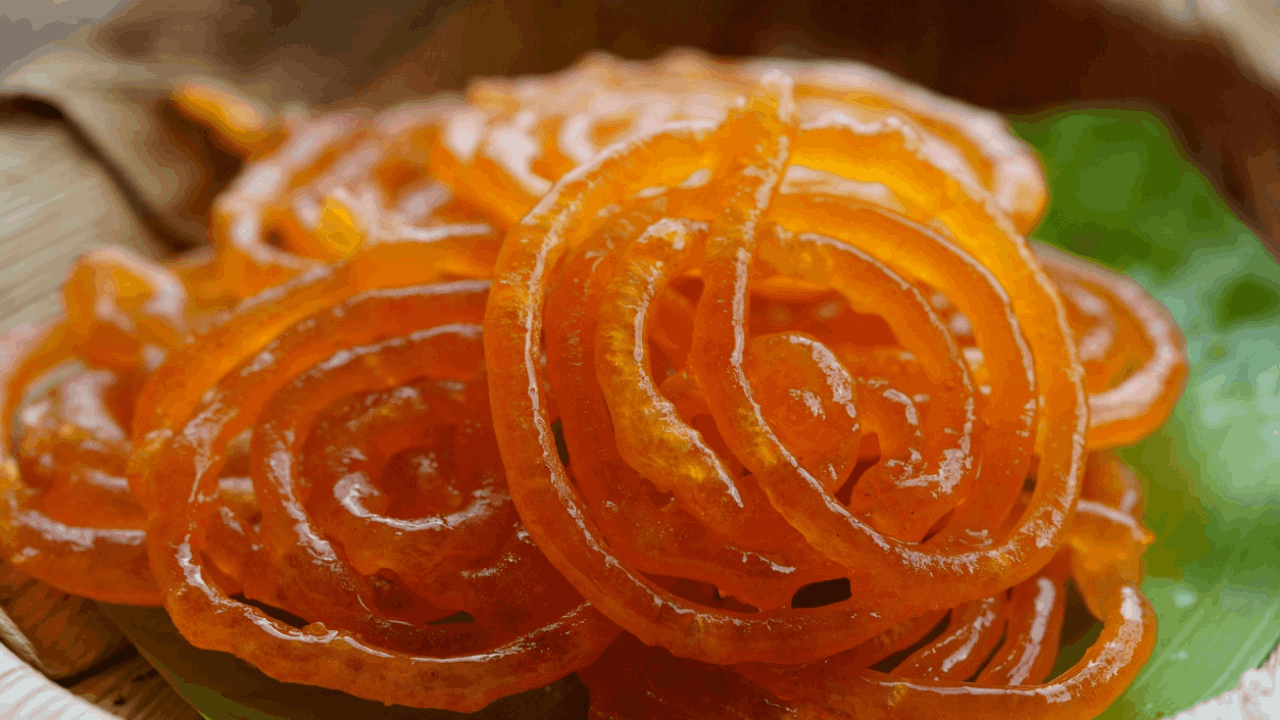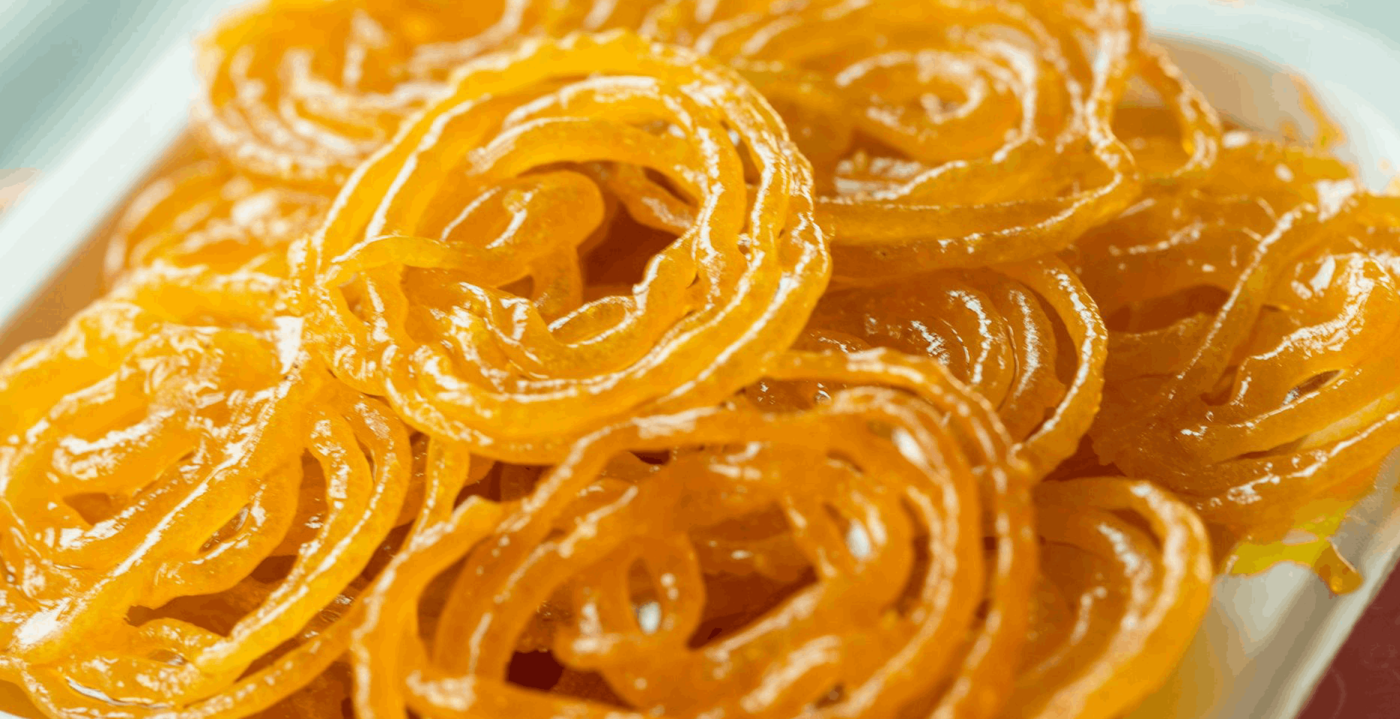Jalebi, an iconic Indian sweet, captivates taste buds with its unique combination of crispiness, chewiness, and a luscious syrupy glaze. Known for its bright orange hue and intricate spiral shape, zelepi has become synonymous with Indian festivals, celebrations, and everyday indulgence. This article delves deeply into the world of jalebi, exploring its rich history, preparation techniques, variations, cultural significance, and its place in global cuisine.
The Origins and Evolution of Jalebi
Historical Background
Jalebi’s origins trace back to ancient times, with historical records suggesting its presence in various forms across different cultures. The sweet has deep roots in the Middle Eastern and South Asian culinary traditions. It is believed that jalebi evolved from the Persian dessert “Zulbia,” which made its way to the Indian subcontinent through trade and cultural exchanges.
In India, its became a staple in both festive and everyday cuisine. Historical texts and cookbooks from the Mughal era frequently mention it as a favorite dessert. The sweet’s popularity continued to grow over centuries, making it a cherished part of Indian culinary heritage.
Cultural Significance
Jalebi holds a special place in Indian culture, often associated with celebrations, religious festivals, and special occasions. Its vibrant color and sweet flavor make it a festive treat enjoyed during Diwali, Eid, Holi, and other significant events. In addition, jilipi is commonly served at weddings, family gatherings, and as an offering in religious ceremonies.
Ingredients and Preparation
Core Ingredients
The primary ingredients for making jalebi include:
- All-Purpose Flour (Maida): The base ingredient for the batter, providing structure and texture to the jalebi.
- Sugar: Used to make the syrup that coats the jalebi, imparting sweetness and a glossy finish.
- Yogurt: Adds a slight tanginess to the batter and aids in fermentation.
- Baking Powder: Helps in leavening the batter to achieve the desired crispiness and texture.
- Water: Used to make the batter and the syrup.
- Saffron or Food Color: Adds the signature bright orange color to the jalebi.
Preparation Process
Making the Batter:
- Mixing: Combine all-purpose flour, a small amount of yogurt, and water to form a smooth, thick batter. The consistency should be similar to pancake batter.
- Fermentation: Allow the batter to rest and ferment for several hours or overnight. Fermentation helps develop the batter’s flavor and texture.
Preparing the Syrup:
- Boiling: Heat sugar and water in a pan until the sugar dissolves completely. The syrup should reach a one-thread consistency (also known as “single-thread” or “one-string” consistency).
- Flavoring: Add cardamom, saffron, or rose water to the syrup for added flavor. Keep the syrup warm until ready to use.
Frying the Jalebi:
- Preparing the Oil: Heat oil or ghee in a wide pan or kadai to the desired temperature. The oil should be hot but not smoking.
- Forming the Shapes: Transfer the batter into a piping bag or a squeeze bottle with a narrow nozzle. Pipe the batter in circular or spiral shapes into the hot oil.
- Frying: Fry the jalebis until they turn golden brown and crispy. Flip them gently to ensure even cooking.
- Coating with Syrup: Immediately immerse the fried jalebis in the warm sugar syrup. Let them soak briefly before removing them.
Detailed Preparation Steps
Prepare the Batter:
- In a mixing bowl, combine 1 cup of all-purpose flour, 2 tablespoons of yogurt, and enough water to make a smooth batter. The batter should be thick but pourable.
- Cover the bowl and let it rest in a warm place for at least 6-8 hours or overnight. The fermentation process will create bubbles in the batter, making it light and airy.
Prepare the Syrup:
- In a saucepan, combine 1 cup of sugar and 1 cup of water. Heat the mixture over medium heat, stirring occasionally, until the sugar dissolves.
- Once the sugar is dissolved, increase the heat and bring the syrup to a boil. Cook until it reaches a one-thread consistency.
- Remove from heat and add flavorings like cardamom powder or saffron. Keep the syrup warm.
Fry the Jalebi:
- Heat enough oil or ghee in a pan for deep frying. Test the temperature by dropping a small amount of batter into the oil; it should rise to the surface quickly.
- Pour the batter into a piping bag or squeeze bottle. Pipe the batter into the hot oil in circular or spiral shapes.
- Fry the jalebis until they are golden brown and crisp, about 1-2 minutes on each side. Remove with a slotted spoon and drain on paper towels.
- Immediately immerse the fried jalebis in the warm syrup. Let them soak for a few seconds to absorb the syrup, then remove and place on a serving plate.

Variations of Jalebi
Jalebi has inspired numerous variations and regional adaptations, each with its own unique twist on the classic recipe. Here are some popular variations:
Imarti
Imarti is a South Indian variant of jilipi made with urad dal (black gram) instead of all-purpose flour. The batter is fermented and then shaped into circular forms before frying. It has a distinct flavor and texture compared to traditional jalebi.
Fruit Jalebi
Fruit jilipi incorporates fruit flavors into the traditional recipe. Mango jilipi, for example, uses mango puree in the batter or syrup, creating a fruity twist on the classic sweet.
Stuffed Jalebi
Stuffed jilipi features a filling of sweetened khoya (reduced milk) or dry fruits. The batter is piped around the filling, creating a delightful surprise in each bite.
Chocolate Jalebi
For a modern twist, chocolate jilipi uses cocoa powder or chocolate syrup to flavor the batter. The result is a fusion dessert that combines the crispy texture of jalebi with rich chocolate flavor.
Mini Jalebi
Mini jalebi is a smaller, bite-sized version of the traditional sweet. It is perfect for serving at parties and gatherings, offering a convenient and fun way to enjoy jilipi.
Traditional Accompaniments
Jalebi is often enjoyed with various accompaniments that enhance its flavor and provide a complementary contrast. Here are some popular choices:
Rabri
Rabri is a creamy, sweet milk-based dessert that pairs perfectly with jalebi. The rich, aromatic flavor of rabri complements the crispiness and sweetness of jalebi.
Chai (Tea)
Jalebi is commonly served with a cup of masala chai or regular tea. The combination of the sweet, crunchy jalebi and the warm, spiced tea creates a delightful contrast.
Curd (Yogurt)
In some regions, jalebi is served with a side of curd or yogurt. The tangy yogurt balances the sweetness of the jilipi and provides a refreshing contrast.
Ice Cream
For a modern twist, jalebi can be served with a scoop of vanilla or saffron ice cream. The cold, creamy ice cream pairs well with the warm, crispy jalebi.
Fresh Fruits
Fresh fruits like pomegranate seeds or sliced bananas can be served alongside jalebi. The fruity freshness adds a light and refreshing element to the rich sweet.
Nutritional Aspects of Jalebi
Nutritional Content
Jalebi, being a deep-fried sweet coated in sugar syrup, is high in calories, sugar, and fat. A typical serving contains a significant amount of carbohydrates and sugar, which contribute to its energy content.
Moderation and Balance
While jalebi is a delicious treat, it should be enjoyed in moderation, especially for individuals managing their sugar intake or calorie consumption. Balancing indulgent sweets with a healthy diet and regular exercise is important for overall health.
Healthier Alternatives
For those looking for healthier alternatives, baked jilipi or reduced-sugar versions can be explored. These variations aim to retain the essence of the traditional sweet while minimizing the impact on health.

Jalebi in Global Cuisine
Popularity in India
In India, jilipi is a staple at festive occasions, weddings, and religious ceremonies. Its sweet, sticky nature and bright color make it a favorite among people of all ages.
International Adaptations
As Indian cuisine has gained global recognition, jalebi has found its way into international restaurants and food festivals. It is often featured in Indian-themed menus and has inspired creative fusion dishes.
Fusion Dishes
Innovative chefs have incorporated jilipi into various fusion dishes, such as jalebi ice cream sandwiches, jalebi waffles, and jalebi-flavored desserts. These modern twists combine traditional flavors with contemporary culinary techniques.
The Art of Making Perfect Jalebi
Common Mistakes and How to Avoid Them
Creating the perfect jalebi involves attention to detail. Here are some common mistakes and tips to avoid them:
- Batter Consistency: The batter should be thick and smooth. If too thin, the jalebi may not hold its shape; if too thick, it may become dense.
- Oil Temperature: The oil should be hot but not smoking. If the oil is too cold, the jilipi will absorb excess oil; if too hot, it will cook too quickly and burn.
- Syrup Consistency: The syrup should be at a one-thread consistency. If too thin, it will not coat the jalebi properly; if too thick, it may crystallize.
Expert Tips
- Use Fresh Ingredients: Fresh flour and yogurt yield the best results. Stale ingredients can affect the texture and flavor of the jalebi.
- Proper Fermentation: Allow the batter to ferment adequately for the best texture. The fermentation process creates bubbles in the batter, making the jilipi light and airy.
- Keep the Syrup Warm: Ensure the syrup is warm when coating the jalebi. Cold syrup can cause the jalebi to become sticky and lose its crispiness.
Cultural and Social Significance
Jalebi in Festivals and Celebrations
Jalebi is a central part of many Indian festivals and celebrations. During Diwali, Holi, and Eid, jalebi is often prepared in large quantities and enjoyed as part of festive feasts. Its sweet and colorful nature makes it a popular choice for special occasions.
Jalebi as a Social Dish
Jalebi is frequently served at social events, including weddings, family gatherings, and community celebrations. Its rich flavor and attractive appearance make it a crowd-pleaser that brings people together.
Stories and Anecdotes
Many families have their own special recipes and traditions related to jilipi. Stories of family gatherings, festive preparations, and cherished moments involving jalebi highlight its significance in Indian culture.
Conclusion
Jalebi is more than just a sweet treat; it is a cultural icon that represents the rich culinary heritage of India. From its ancient origins to its modern adaptations, jilipi continues to delight and enchant food lovers around the world. Whether enjoyed as a traditional dessert or a contemporary fusion creation, jilipi embodies the spirit of celebration and indulgence.
As you explore the world of zelepi, whether by preparing it at home or savoring it at a restaurant, you are participating in a culinary tradition that has been cherished for centuries. Embrace the flavors, appreciate the history, and savor the delightful experience of jalebi—a timeless symbol of sweetness and joy.
